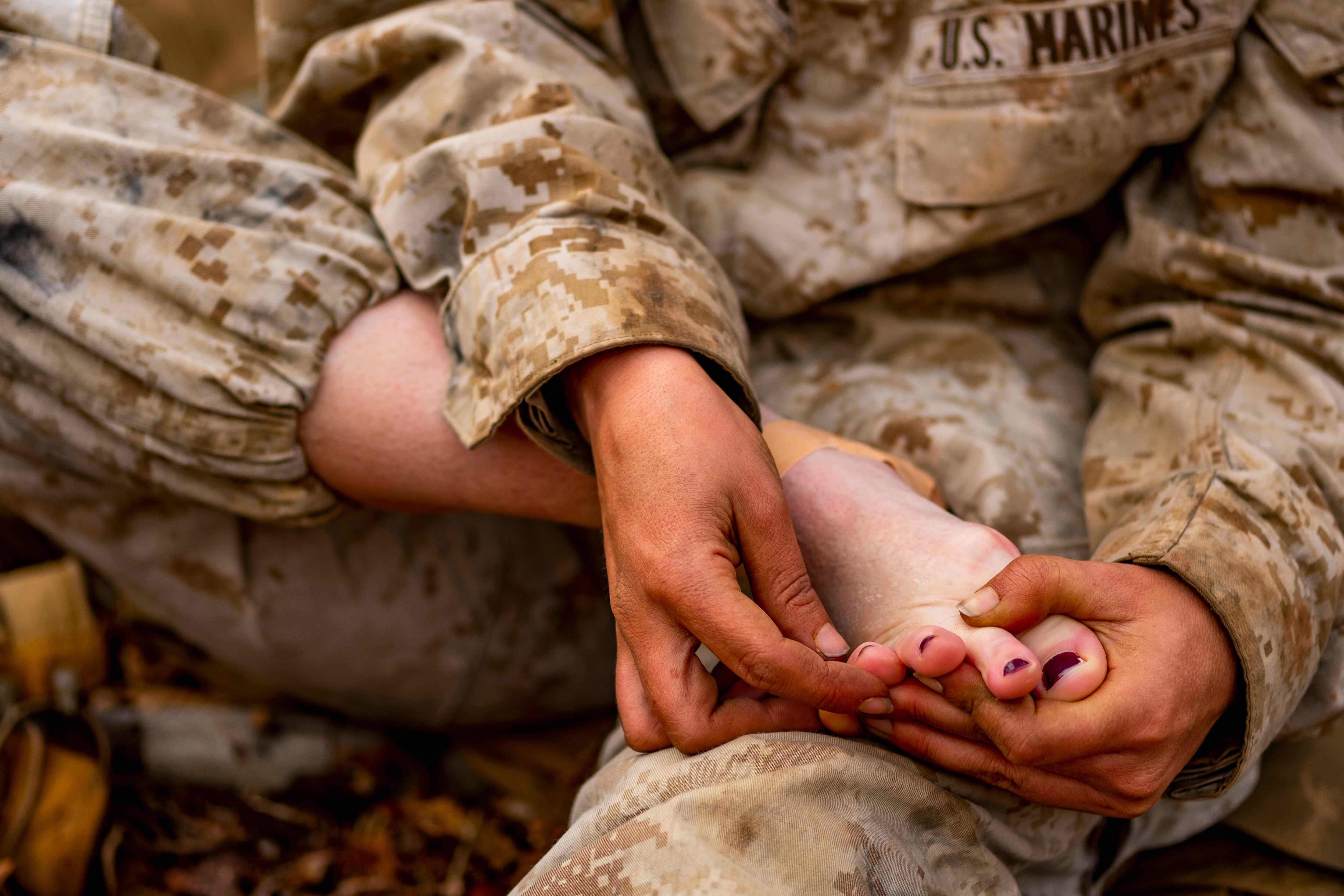“The human foot is a masterpiece of engineering and a work of art,” according to Leonardo da Vinci.
There’s no disputing that notion, but the original Renaissance man’s admiration aside, the human foot also happens to be an invaluable military tool that, if injured, can cause immense amounts of grief among troops prone to doing a bit of marching.
“Foot and ankle injuries are prevalent and significant health concerns for military personnel, with potential long-term consequences,” Lt. Col. Michael Taye, chief of podiatry at Walter Reed Army Medical Center and consultant to the Army Surgeon General, told Military Times.
Maintaining foot health, therefore, is of the utmost importance for troops on active duty, Taye added. Failure to do so can result in major issues that linger throughout one’s service or for a lifetime after separating from the armed forces.
“Active-duty military personnel are particularly susceptible to foot and ankle injuries due to the physically demanding nature of their work, which often involves long marches, running, jumping, and rucking with heavy loads,” Taye continued. “Some of the most common foot and ankle injuries in active-duty service members include ankle sprains, plantar fasciitis, stress fractures, Achilles tendonitis, shin splints, blisters, and ingrown toenails.”
Fortunately, there are myriad ways to protect the piggies, according to Taye, including wearing properly fitted boots, promptly caring for injuries, and practicing nail hygiene. Proper blister care is also a major component of foot health.
And what of the old adage from medics about fresh socks?
“The notion that a fresh pair of socks can change the life of a service member is rooted in the practical benefits they provide,” Taye said. “Fresh socks can impact a service member’s health, performance, and overall well-being by offering moisture management, temperature regulation, friction reduction, improved hygiene, and comfort and morale boosts.”
But beyond clean woolens, one of the key measures to preventing long-term damage is to avoid suffering in silence.
“Prompt medical attention and appropriate management are crucial to minimizing the long-term consequences of these injuries,” Taye said. “Early diagnosis, appropriate treatment, and rehabilitation may improve service members’ prognosis and readiness and reduce the risk of long-term complications.”
Simply put, if your feet hurt, don’t put a sock in it.
Sarah Sicard is a Senior Editor with Military Times. She previously served as the Digitial Editor of Military Times and the Army Times Editor. Other work can be found at National Defense Magazine, Task & Purpose, and Defense News.
In Other News














